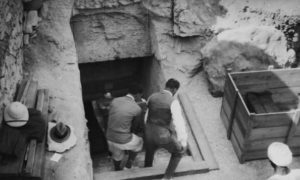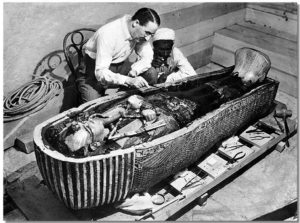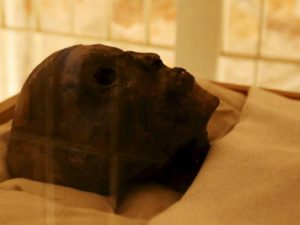Scans of King Tut’s Tomb Reveal New Evidence of Hidden Rooms
Second round of radar scanning will look for more clues to what lies behind the walls of Tut’s burial chamber. One theory: the tomb of famous Queen Nefertiti.
For at least 3,339 years, nobody has seen what lies behind the west and north walls of the burial chamber of Tutankhamun. But this secret of three millennia might not last much longer.
On Thursday, Mamdouh Eldamaty, the Egyptian antiquities minister, held a press conference in Cairo to announce a tantalizing new piece of evidence: Radar scans on those walls have revealed not only the presence of hidden chambers, but also unidentified objects that lie within these rooms. These objects, Eldamaty said, seem to be composed of both metal and organic materials.
“It could be the discovery of the century,” he said. Noting that he can’t speculate further about the things that lie within the chambers, he said that another radar test has been scheduled for the end of this month, in order to determine the best way to proceed with the investigation.
The results of the radar scan represent another step toward a radical new understanding of the most famous tomb in Egypt’s Valley of the Kings. First discovered by archaeologist Howard Carter in 1922, the tomb of King Tut yielded an astonishing array of grave goods—more than 5,000 artifacts, many of them in pristine condition. It was the most intact royal tomb ever found, providing Egyptologists with an unprecedented glimpse into the material life of a king who ruled during the 14th century B.C.


